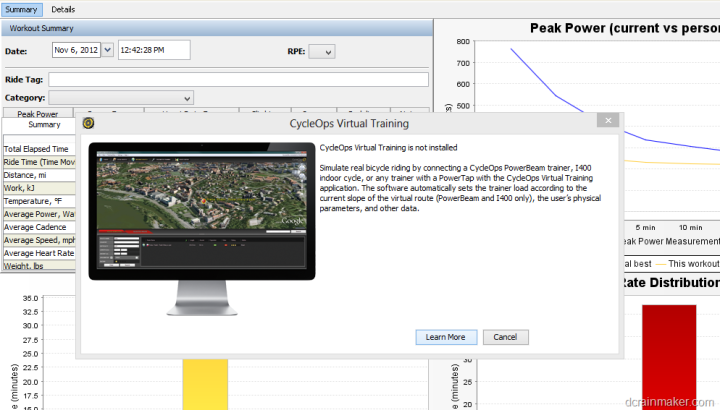Joule Gps Software
The CycleOps Joule GPS head unit is an ANT+ compatible cycling computer with GPS, meaning it works wirelessly with power meters, heart rate straps and speed/sensor cadences that employ the ANT+ protocol. Sold by CycleOps, the company behind the rocksteady PowerTap hub-based power meter, the Joule GPS functions best as a power-based training tool. There’s one big button smack in the center to start and stop intervals, and you can program a variety of workouts based on time, amount of work or distance. But the Joule GPS has a few frustrating quirks, such as the absence of a start/stop button (ride times start automatically when the unit senses movement) and a comparatively unfriendly user interface. The GPS functionality is fairly limited to recording where you’ve been, whether you use that later with software analysis or for finding your way back with the breadcrumb trail it creates on an otherwise blank screen. There’s no map functionality, so for the latter you just have a squiggly line with a magnetic compass to assist you.


Using the CycleOps Joule GPS? The Cycleops Joule is simple to use and provides. Do yourself a huge favor and download the CycleOps PowerAgent software.
You can set way points to navigate to, follow a route via the breadcrumb trail or ride against a previous performance on a given route with time ahead/behind feedback. A large amount of power-based data is available, ranging from the basic current/average/max watts readouts to energy expenditure measurements such as kilojoules and Training Stress Score. (A ‘smoothed’ power field of average three-second power is absent, but CycleOps says this is in the works.) Three of the five screens are configurable to your preference of type of data shown, with all the standard basics such as speed, elevation, cadence, etc. Some things aren’t configurable, such as the time of day, which remains in tiny font at the upper left. For many riders, this is perhaps the key point of data most days.
Three of the five screens are configurable in the top four areas, with the bottom two fields being additional detail for the highlight area: The four larger zones are configurable, on three screens To navigate through the many menus, there are three buttons, which typically function as up, down and select. There was no ‘back’ button, however, on the units we tested, so even jumping back a screen often requires scrolling through a menu and selecting ‘Back.’ This must be improvable, as it took us 28 button presses to zero the torque offset before the start of a ride and get back to the ride menu. The is half this and the is even simpler. Note: Since this review was published, CycleOps informed us that the interval button has been made to be the 'back' button in the most recent firmware update. 3d Max 2013 Full Version For Mac. They're also working on another firmware update that has power and cadence smoothing and power and cadence with and without zeros.
Once the computer is set up to your preferences (including pairing with ANT+ accessories or setting up multiple bikes, each with their own ANT+ connections), rolling out the door and getting started is, um, automatic. Unlike other GPS units that clearly alert you that they’re searching for a satellite signal, the Joule only blinks its tiny due north arrow, which is difficult to see, and gives you a multi-bar readout on the fifth screen, which you have to navigate to. With our test units it would often take minutes before a signal was found. And then, once motion was detected, the ride time count started automatically. We found this annoying, as we’d often be a mile down the road before the thing kicked in.